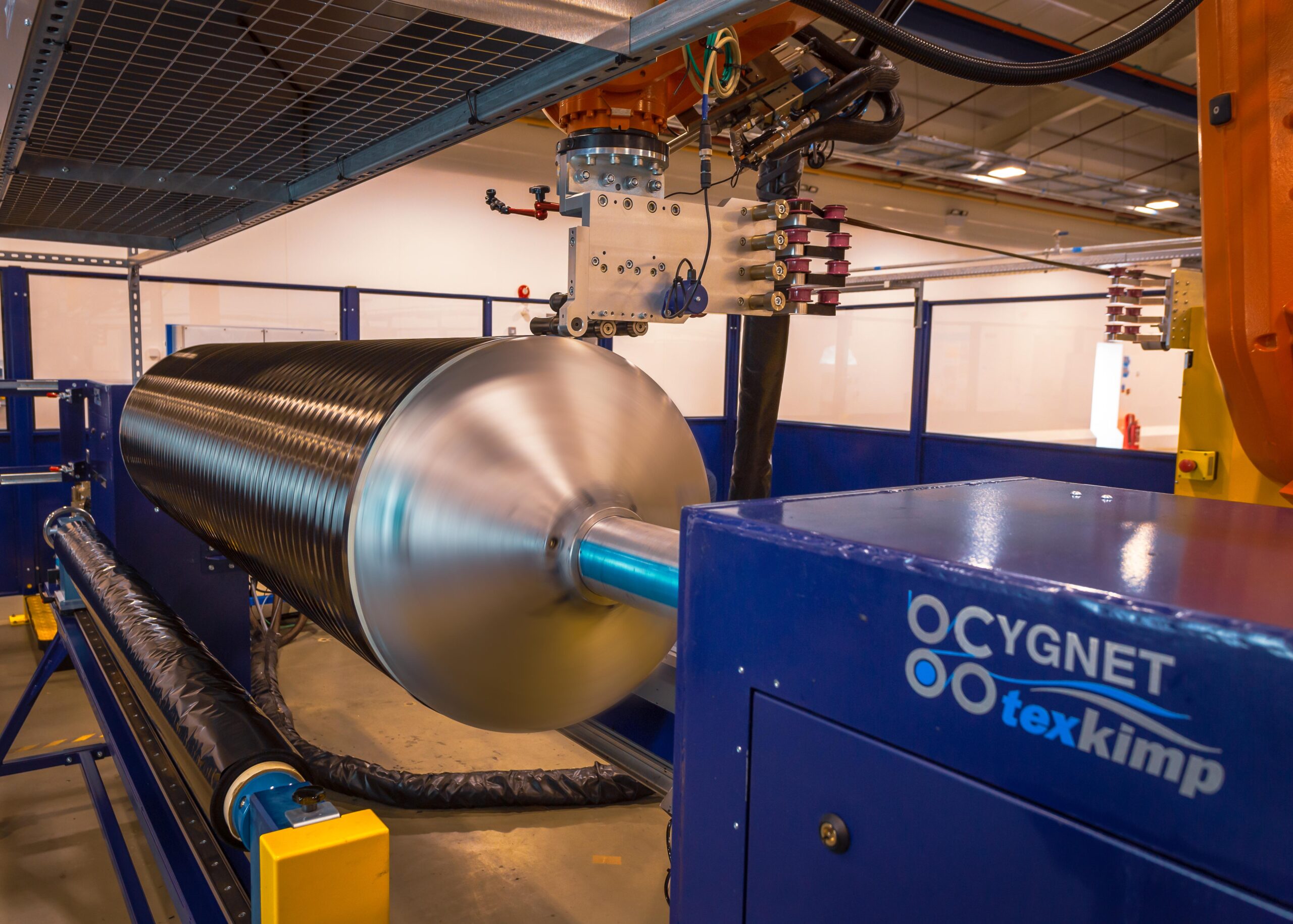Composite materials company Solvay (Heanor, UK) has installed a four-axis robotic filament winding machine designed and built by fibre handling specialist and custom machinery manufacturer Cygnet Texkimp (Cheshire, UK) to make low-cost prepreg material and composite parts.
The bespoke winding machine was installed at Solvay’s UK Application Centre, an R&D facility based in Heanor, Derbyshire, UK, where the company develops new technologies and processes for the adoption of composites in high volume markets including automotive and aerospace.
The filament winder was designed by Cygnet Texkimp to enable Solvay to produce large sheets of composite material, or preforms, which can be moulded using Solvay Double Diaphragm Forming (DDF) technology and hot compression moulding to create exterior parts for the automotive industry, including bonnets and boot lids [hoods and trunk lids].
It is in effect a semi-automated drum winder, but unlike traditional machines of this kind, it is capable of winding fibre in a much wider range of angles, so providing customers with greater flexibility in selecting material properties within multi-layer preforms.
The winder is capable of winding at a fibre speed of up to 100 metres/min and has been built to accommodate a mandrel spanning 2.2m in length by 0.6m in diameter, which means it can produce 2m² preforms. The finished wind is sliced from the mandrel and trimmed to size using an integrated, automatic cutting unit before being transported to the next stage of processing on a dedicated transfer table.
Richard Russell, Process Engineer at Solvay, said: “Cygnet Texkimp worked closely with us to develop a highly controlled and efficient process that removes a lot of the labour requirement and allows us to show our customers how they can produce carbon fibre prepreg quickly, cost-effectively and competitively using our resins and materials.
“For the automotive market in particular, this is a very interesting alternative way to make high-performance composite parts in medium volumes.”
The winder takes dry fibres, or tows, from an integrated, four-position driven creel, and feeds them onto an application head. The driven creel controls fibre tension throughout the process, which ensures consistent spreading despite variations in fibre speed which occur throughout the winding process.
The four tows are spread over the application head to create a 50mm wide consolidated sheet or tape onto which Solvay’s resin system is applied, immediately before it is laid onto the mandrel.
Cygnet Texkimp’s design incorporates a resin metering system to mix Solvay’s advanced resins at the point of application, and in doing so eliminates the issue of pre-mixed resin curing before application or needing to be stored under special conditions.
The ability to apply resin to the fibre in this way gives Solvay and its customers greater control over the fibre volume fraction in each layer of the finished material. This enables manufacturers to add strength where it is needed and minimise the weight of the finished part.

